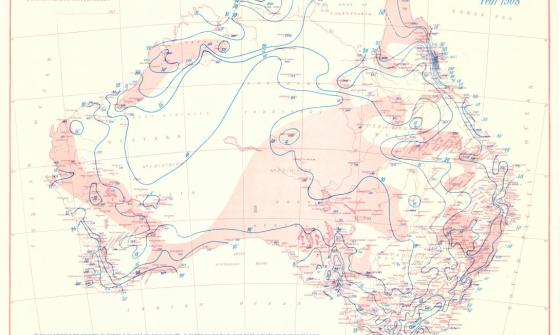Commemorating Cyclone Tracy through images and oral histories
Content warning
This blog includes photographs and discussion of an event that some readers may find upsetting or distressing.
...when I went outside it was like Flanders Fields, the caravans were all over the place.
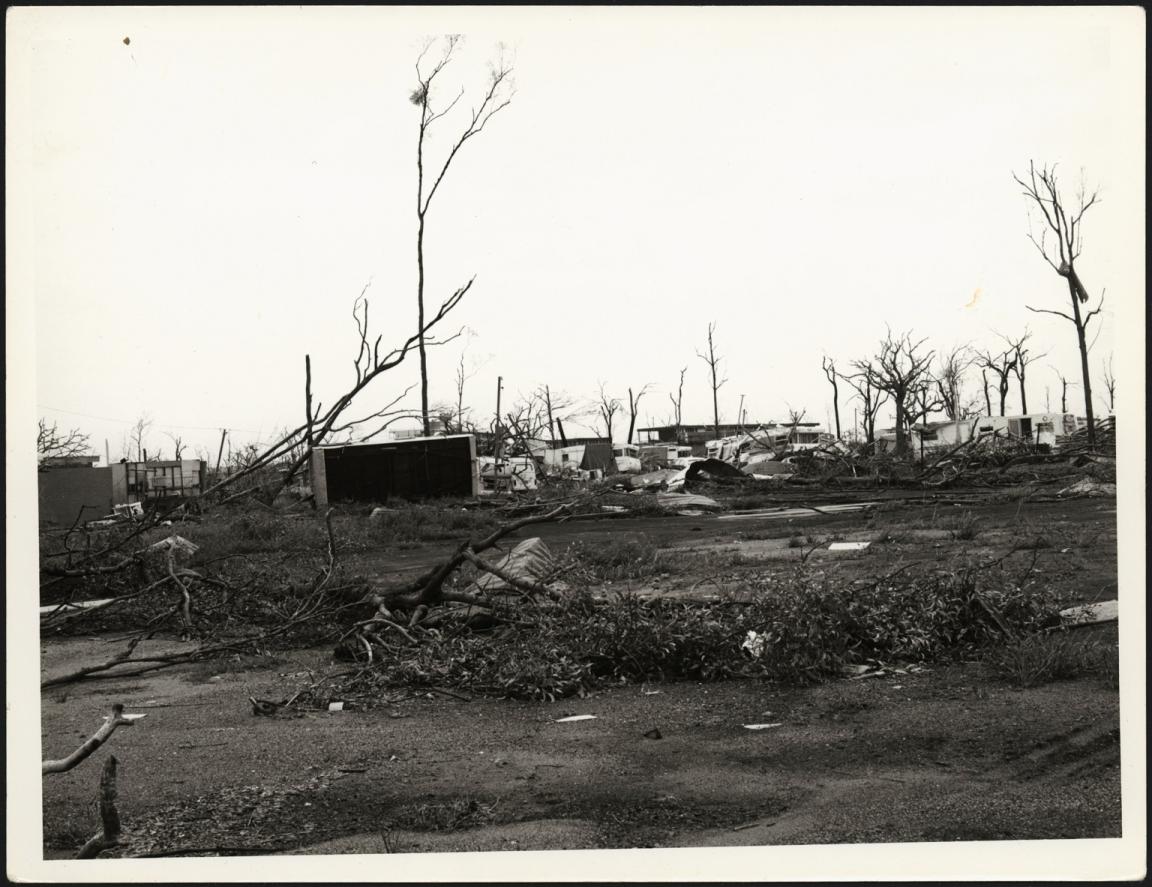
Alan Dwyer, Caravan park in Darwin after Cyclone Tracy, December, 1974, nla.gov.au/nla.obj-148903604
Alan Dwyer, Caravan park in Darwin after Cyclone Tracy, December, 1974, nla.gov.au/nla.obj-148903604
On Christmas Eve 1974, a category 4 tropical cyclone hit Darwin. The storm raged through the night, and the sound of the screeching wind remains an enduring memory for all who heard it. It is estimated eighty per cent of buildings in the city were destroyed or seriously damaged. Sixty-six people lost their lives and hundreds more were injured.
The Library's collection includes numerous digitised photographs and oral histories which provide an insight into the destruction and impact of the cyclone on the people and landscape of Darwin.

Alan Dwyer, Aerial view of damage to buildings by the bay shore in Darwin after Cyclone Tracy, December, 1974, nla.gov.au/nla.obj-148904602
Alan Dwyer, Aerial view of damage to buildings by the bay shore in Darwin after Cyclone Tracy, December, 1974, nla.gov.au/nla.obj-148904602
The cyclone struck the coastline in the middle of the night. The timing was thought by some to be fortunate for one reason — most people were at home, so less likely to be hit with debris outside. But it was slow moving, which meant it hung over the city causing destruction for many hours.
In an oral history interview held in the National Library collection, Peter and Helen Bate reflected on what it felt like to shelter in their house as the cyclone raged outside.
I knew the roof had gone. And why you knew the roof had gone was because you were soaking wet. So the water, rain, was just pouring in through the ceiling. We still had a ceiling above us, so couldn’t actually see there was no roof.
He wondered if they would be safer in the concrete storeroom elsewhere in the house, but it was too dangerous to move once the cyclone began. When it eventually passed the next morning, it was clear the storeroom would not have been the safe haven he imagined.
We got downstairs and where we’d thought we should have been sheltering – in the concrete storeroom – it had been reduced to rubble. So, we’d picked the right spot to shelter.
During the night some thought only their own houses had been affected. As people explored beyond their own streets, the extent of the destruction became clear.
Driving around the streets was eerie, because you knew where you were, but all the landmarks were gone.
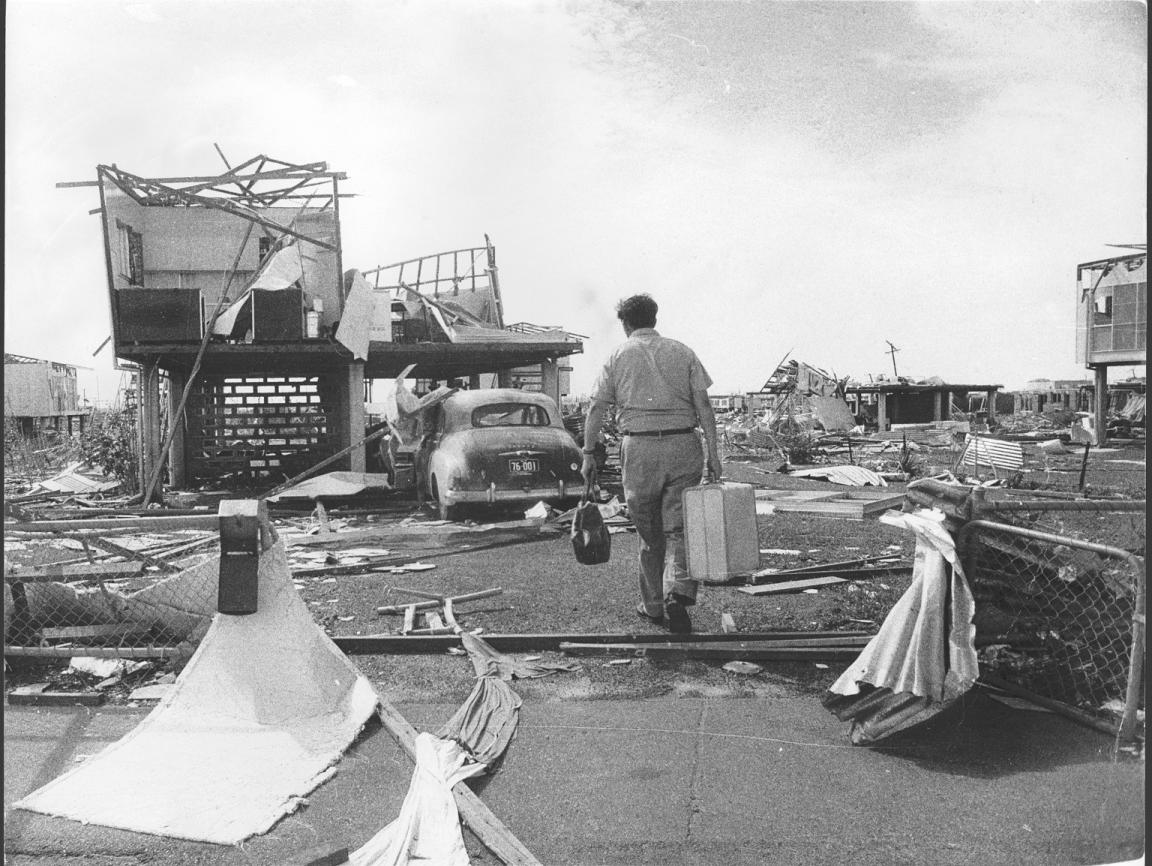
Bruce Howard & Herald and Weekly Times, Tracy - she broke his heart : the morning after Cyclone Tracy devastated Darwin, Casuarina resident Lynn John Cox returned from holidays to his wrecked home, 1974, nla.gov.au/nla.obj-148158468
Bruce Howard & Herald and Weekly Times, Tracy - she broke his heart : the morning after Cyclone Tracy devastated Darwin, Casuarina resident Lynn John Cox returned from holidays to his wrecked home, 1974, nla.gov.au/nla.obj-148158468
In the wake of the cyclone police, military personnel and other volunteers searched for and assisted survivors in the debris, treated the injured and began relief and reconstruction efforts.
Nurse Geraldine Box worked in theatre for 48 hours straight until she and others were relieved by a team from Woden Valley hospital.
I can remember them walking in and saying, ‘Right just go’ you know, go where?
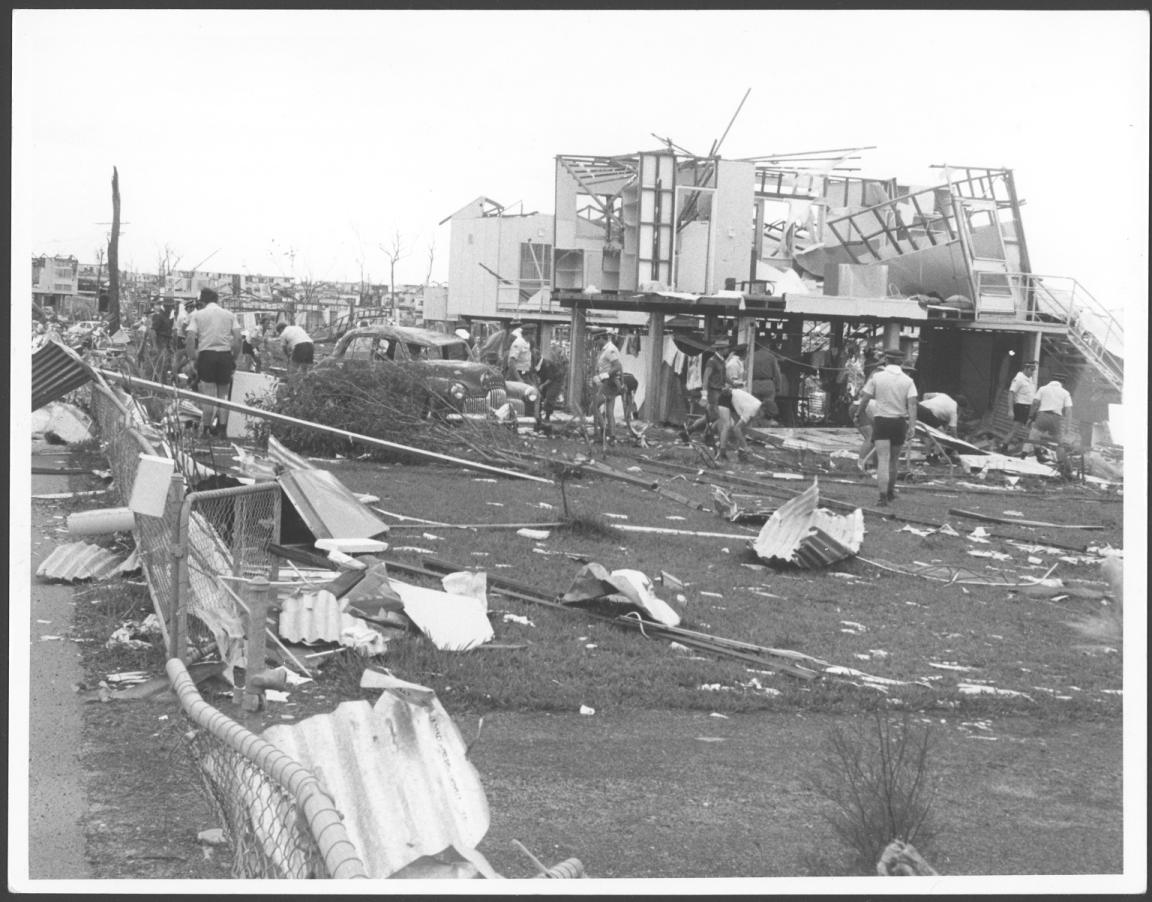
Alan Dwyer, Large team of New South Wales Police searching through the debris of houses destroyed by Cyclone Tracy, December, 1974, nla.gov.au/nla.obj-148904105
Alan Dwyer, Large team of New South Wales Police searching through the debris of houses destroyed by Cyclone Tracy, December, 1974, nla.gov.au/nla.obj-148904105
Tens of thousands of Darwin residents were evacuated to the southern states in the days after the cyclone. Some never returned to the place they had once called home. Those who remained worked to rebuild the town and community in difficult conditions. Fifty years on, Cyclone Tracy remains one of the most infamous natural disasters in Australian history.
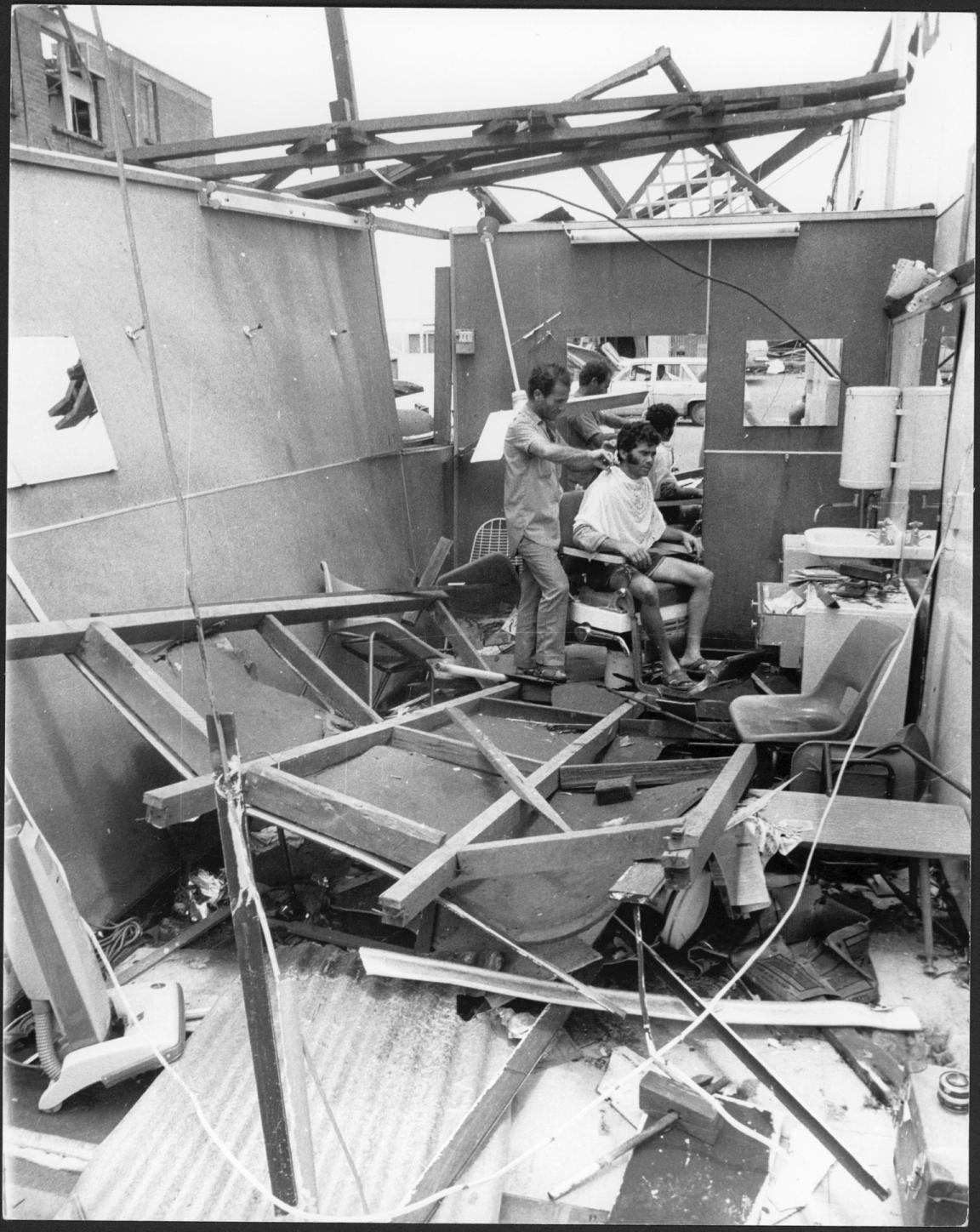
Bruce Howard & Herald and Weekly Times, Trying to get back to business, a barber gives a haircut in his wrecked shop in Darwin's main street, 1974, nla.gov.au/nla.obj-148158862
Bruce Howard & Herald and Weekly Times, Trying to get back to business, a barber gives a haircut in his wrecked shop in Darwin's main street, 1974, nla.gov.au/nla.obj-148158862

Bruce Howard & Herald and Weekly Times, HMAS Attack high and dry in Darwin Harbour after Cyclone Tracy, 1974, nla.gov.au/nla.obj-148159065
Bruce Howard & Herald and Weekly Times, HMAS Attack high and dry in Darwin Harbour after Cyclone Tracy, 1974, nla.gov.au/nla.obj-148159065
